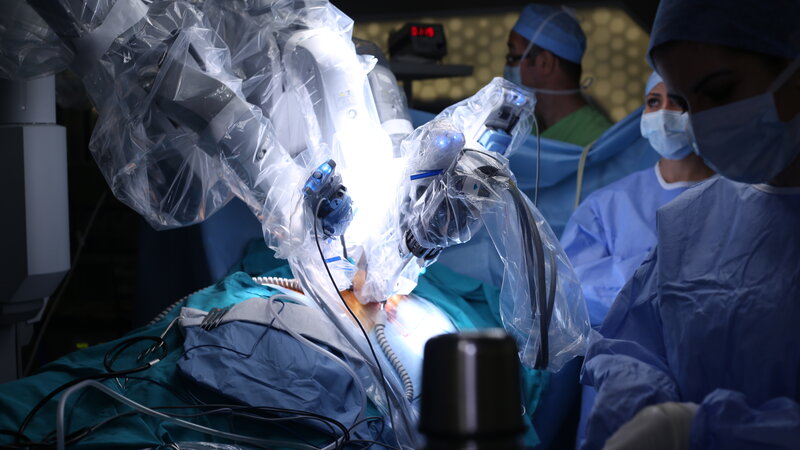When a global medical device manufacturer needed to take a magnetic sensor from concept to production, it turned to our team at Dura Magnetics to develop a solution.

Patient Critical Characteristics
Seeking to develop a robotic surgical device for use in patient care applications, our customer required an array comprised of small permanent magnets for a magnetic sensor. The configuration of magnets within that array would relay information to the robotic controller.
To recommend a suitable solution, Dura first did a thorough risk analysis.
“At different stages of the design process, we need to know what can go wrong and quantify that risk.” said Robert Csortos, Chief Engineer at Dura Magnetics. “In this instance, when we performed the Process Failure Mode Analysis, the magnet configuration was deemed a patient critical characteristic. So theoretically, if a magnet was too weak, too strong, or out of position, the robotic controller could make a poor choice that could potentially harm a patient.”
With patient safety paramount, Dura offered a magnet configuration recommendation, derived from extensive 3D modeling and legacy knowledge.
Capturing the Magnet Performance Requirements
After being formally engaged for the medical device development, our team began work to capture the customer’s expectations and application performance requirements.
To establish a clear picture of the magnetic performance requirements, we considered the alloy energy density and predicted the naturally occurring magnetic performance degradation over the lifetime of the product.
Dura also needed to understand the performance requirements in the operational environment, including thermal exposure during the device manufacturing process and use in the field, as well as the risk of corrosion. Dura also factored in the dimensional tolerance zone requirements for magnet integration into the subassembly.
During this phase of planning, our team considered the strict regulatory and statutory requirements for products within the medical industry. We also established expectations with the customer on annual usage volume and packaging requirements.
“What we don’t want to do is design a magnet that can’t realistically be made,” said Csortos. “Beyond the magnet technology, there’s additional criteria to consider. It needs to meet price targets and production volume.”
Magnet Design Development and Validation
Once the criteria was identified, we used product samples, 3D models, and our years of magnet engineering experience to design a magnetic array to meet the customer’s requirements.
We recommended an alloy, grade, and conformal coating for the permanent magnetic configuration. To validate the design, we tested manufactured samples at the design limits in the laboratory.
A Proven, In-Control Magnet Manufacturing Process
Once the medical device manufacturer and their sub-tiers approved the design, our team developed and validated the manufacturing process to ensure consistent, repeatable quality.
During this phase, we created a process flow with identified critical process characteristics. We mitigated risk through a Process Failure Mode and Effective Analysis, and we established a manufacturing control plan.
We developed and validated our measurement system to gauge repeatability and reproducibility of the magnetic performance and dimensional requirements. This included the validation of multiple measurement streams.
Next, we completed and validated our tool design and performed installation qualification, to ensure that our equipment and tooling operated as intended.
A key step in this process included the performance of operational qualification, where we challenged process input variables. In this instance, we substantiated that the thermal rise in equipment could be controlled while operating at 150% of the intended production cycling. We also verified the magnet saturation at the minimum current level.
Finally, we executed short-term capability studies to verify the magnet dimensions and performance.
“Proving that our manufacturing process is in control is essential for ensuring that our customer will always receive one hundred percent conforming parts,” said Csortos. “This is a key requirement for all of our customers, but is especially critical to those in the medical industry.”
A Product Realization Process Like No Other
After the medical device manufacturer approved our First Article Inspection Report (FAIR) submission, we began to work with their sub-tier vendors for magnet integration and ongoing product fulfillment—the final step in our product realization process.
“There’s not a lot of magnet vendors in the United States, or even across North America for that matter, who have a product realization process like this to support the medical industry. It’s an extremely specialized field that requires an extensive legacy knowledge base,” said Csortos.
If your medical device requires a custom magnet solution, contact the team at Dura Magnetics to get started. Our engineers will work closely with your organization to take your project from concept to production.

